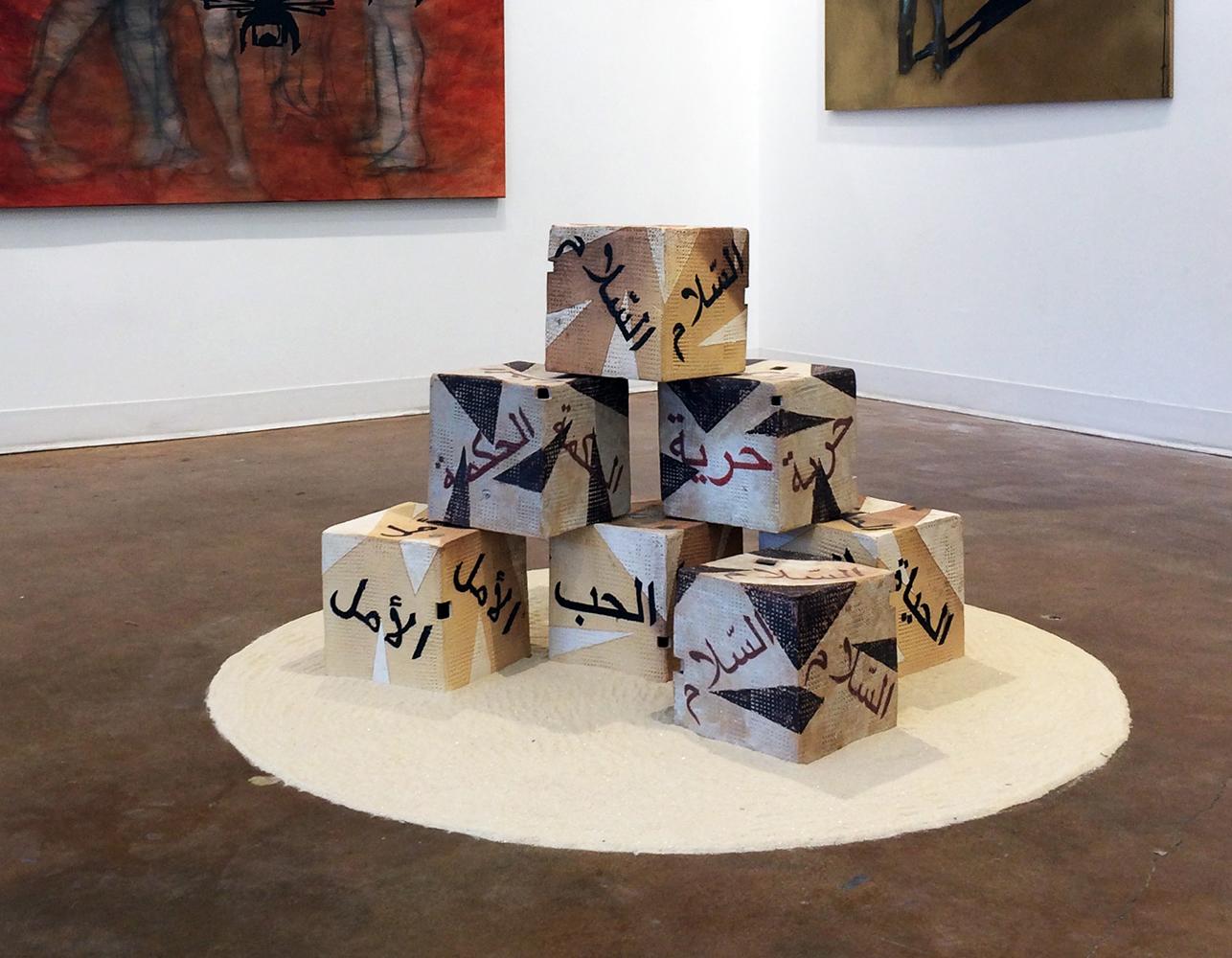About the Artist
Vidya Vijayasekharan is an artist, art historian and educator, whose work is informed by both history and mythology. She has been teaching Art History at Montgomery College since 1993. She lives and works in Maryland.Vidya Vijayasekharan website View Website Vidya Vijayasekharan website Purchase Art
Artist's Statement
Objects often transcend their functional roots to communicate with us through observation. My ceramic pieces are inspired by my travels and are the result of my response to those cultures and the environment. I use a variety of stoneware and each type of clay comes with its unique personality and characteristics which allow me to respond to those properties. My interest in architecture, design and the Asian aesthetic are reflected in these hand-built, slab, and coil construction ceramic sculptures which are twice fired at about 2200 deg. F. The textured and patterned surfaces are the result of engraving, stamping, inlay and carving. Some pieces are burnished and gilded, while others have multiple applications of slips, stains and glazes. In my recent work I use mishima inlay, a centuries-old technique popularized in Korea. The form and surface of each piece are marked by my hand as well as the clay and the fire from the kiln.Featured Work
Photos






Featured Work: Photos
Birds of Peace - detail
Stoneware with glazes
2017
Detail of wall installation
Birds of Peace
High fired stoneware, with glazes and inlay
2017
Ceramic wall installation with multiple pieces, using ancient calligraphic texts; with Hebrew, Mandarin, Arabic and Sanskrit
Community
High fired stoneware, with inlays and slips
2014
3 piece abstract Ceramic sculpture
Pangong Tso
High fired Ceramic: Stoneware with inlaid slips an, glazes and gold leaf
2015
3 Piece Sculptural Vases influenced by the stark landscape of the HImalayas
Language of Migration
wall installation Recycled, textured stoneware with slips, stains and glazes and gold-leaf and madder-dyed fabric
2018
This work was spurred by an analytical interest in migration, of people as well as ideas and elements. Migration has been part of human activity since time immemorial and the very act of movement and displacement from its source of origin is also intrinsic to clay. When observing these abstract, mobile, textured forms please consider how its structure and composition is affected by environmental influences, both physical and chemical; the mineral composition of clay is unique to its journey of migration from the original source. No two clays are alike, and in transforming into ceramic sculpture it is further molded by human hand and concepts, tools of the craft as well as the energy from the kilns. Migration leaves an indelible mark on everything and everyone.
First There Were Seven
Recycled, textured stoneware, with slips and stenciled glazes
2016
I teach at an area college with international students, many from the Muslim-majority countries that are part of the current US travel ban. When Spring semester began in January 2017 there was palpable anxiety in my classroom, and the idea for this installation took shape at that time.
The abstract, cubic form was deliberately chosen for its symmetry and association with truth and the “corner stone” or foundation. The clay used in the making of the sculpture is entirely recycled from the material used by ceramic students at the college. Arabic calligraphy (common to all nations,) is used to inscribe the words, which include: Love, Wisdom, Hope, Peace, Freedom and Life – all universal concepts that are being increasingly threatened, today.
For Sale
$4,000.00
Contact the artist to purchase this piece

